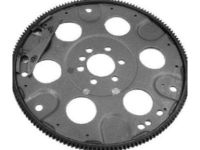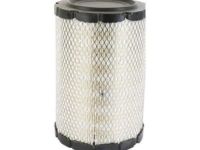Popular OEM Chevrolet K3500 Parts
- Body & Hardware Parts View More >
- Steering Parts View More >
- Electrical Parts View More >
- Air & Fuel Delivery Parts View More >
- Charging & Starting Parts View More >
- Engine Parts View More >
- Belts & Cooling Parts View More >
- Suspension Parts View More >
- Driveline & Axles Parts View More >
- Emission Control & Exhaust Parts View More >
- Transmission Parts View More >
- Brakes Parts View More >
Why Buy Genuine Chevrolet K3500 Parts From ChevyPartsGiant.com
Looking for real Chevrolet K3500 parts? ChevyPartsGiant.com may be a better choice to find genuine parts at wallet-friendly prices. We sell only OEM Chevrolet K3500 parts, ensuring perfect fit, reliability, and long-term performance. With our website, you can easily get access to the same parts found at local Chevrolet stores. All components are produced by Chevrolet and are exclusively fitted on Chevrolet K3500 automobiles. By shopping at our store, you can enjoy the quality of the Chevrolet factory without the high prices of brick-and-mortar facilities. We achieve this because we are an online store operating at lower costs, which we pass on to you. We also have a user-friendly platform where you can find and order genuine Chevrolet K3500 parts swiftly. We are here to make your process of restoring a Chevrolet K3500 or dealing with simple repairs quick and inexpensive. We also make it easy to obtain Chevrolet K3500 parts at competitive shipping prices and a team of knowledgeable staff ready to take your order. Choose ChevyPartsGiant.com to save time and money, as well as keep your Chevrolet K3500 in the good condition.
The Chevrolet K3500 served as the complete Chevrolet lineup foundation for production from 1988 to 2002 as it filled the main role in C/K series fourth-generation releases. The K3500 arrived with a basic 5.7 L V8 engine while offering customers a choice of diesel V8 engines that included a 7.4 L and a 6.2 L model. The Detroit Diesel V8 engine achieved consecutive power increases to 150 hp at 3,500 RPM and torque grew to 280 lb-ft at 2,000 RPM before a later version delivered 255 hp at 4,600 RPM with 330 lb-ft at 2,800 RPM. The Chevrolet K3500 presents three and four-speed automatic and 5-speed manual transmission options for customers. Superior torque forces arising from the four-wheel-drive system enable complete control of the vehicle on all types of surfaces. The Chevrolet K3500 satisfies all buyer needs through its various body style options. Reliability seekers will discover authentic Chevy K3500 components which offer original factory standards and maintain durable precision during installation. The Chevrolet K3500 establishes itself as a dependable model in the pickup segment because of its high-quality features.
In the Chevrolet K3500, fuel delivery, diesel injection, and engine sealing are the causes of problems. The K3500 can crank long or will not restart hot in the fuel delivery. A weak engine fuel pump slows down the buildup of pressure, leading to stalling, no start, or hesitation. Change the fuel pump, check on the power and ground and test on gauge pressure. In diesel trim, the Chevrolet K3500 can misfire or surge when there is pump error develops. The diesel injection pump may become faulty either electronically or mechanically due to heat and vibration. Fit a high quality diesel injection pump, check harness connections and review grounds. Check balance rates on the K3500, smoke watch, steady idle. In engine sealing, the engine seal around the intake manifold gasket fails and leaks oil or coolant. The K3500 can possibly overheat, give white smoke, or get coolant in the oil. Make sure that you replace the intake manifold gasket, clean mating surfaces and torque fasteners one after the other. Following every repair, road test the Chevrolet K3500 and record the pressures and temperatures. Test the codes, pressure test cooling and confirm knock off stable fuel trims. Routine examinations make the Chevrolet K3500 dependable, effective, and prepared to work. Follow the regular Chevrolet maintenance schedule and keep records on readings to avoid getting the same fault again.
Chevrolet K3500 Parts and Q&A
- Q: How to Service and Repair a Flywheel on Chevrolet K3500?A:Disconnect the negative cable of the battery and lift the vehicle to service and repair the flex plate. Disassemble the transmission and then the clutch assembly and flywheel on the crankshaft, making sure that any burrs are taken off. Install flywheel and clutch, transmission, and rejoin battery negative cable.
- Q: How to replace the fuel pump module on Chevrolet K3500?A:In order to change the fuel tank pump module, collect the required equipment and unconnect the negative battery cable. De-pressurize the fuel system, empty the tank and pull it out. Clean out the fuel sender assembly and strainer and examine them, checking them against contamination. Refill the tank, install the components, checking the connections and looking at the leaks.
- Q: How to Properly Service and Install an Air Filter on Chevrolet K3500?A:In order to service the air filter, unscrew the hold down clips and take off the air cleaner cover. Take the filter and twist it out of the duct. Clean the housing, fit the new filter and make sure that the duct fits into place. The last thing is to re-assemble the cover, attach the clips and adjust the indicator.



















































